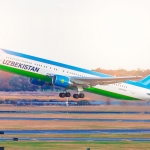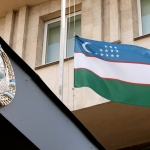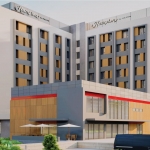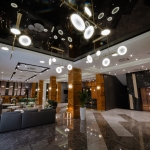28 MARCH 2019 Y.
Deep inside Samanids Park, not far from the Ark, there is one of the most unique buildings in the whole Central Asia – Mausoleum of Samanids.
According to the legend, this mausoleum was constructed by the founder of Samanids Dynasty Ismail Samani for his father Ahmed Ibn Asad at the turn of 9th-10th centuries. Later the mausoleum became burial vault of Samanids – Ismail Samani and his grandson are buried there as well.
This building strikingly differs from other buildings in Bukhara and Samarkand. It is in the shape of cube with skillfully bricked tracery patterns. Light and tracery, it changes along with sunlight and draws fanciful sun flints on its walls and floor. Mausoleum is rich with different symbols. Not only cubic shape relates to the Holy Kaaba in Mekka but symbolizes the Earth, while the dome symbolizes the Sky. Their combination is symbol of unity of the Universe. Above the entrance arches there are round disks made from figured brickwork – symbols of sun and planets, and ornamental diagram of squares inscribed into each other which gives the key to the decryption of building plan.
The building is monumental but at the same time it differs with structural wealth. Brickwork obtains the form of weaved basket. Due to this the color of the building changes depending on the sun illumination.
There is a tomb inside, simple and majestic. According to the legend, Ismai Samani, who was wonderful strategist and brave commander, even after his death was giving advices to Bukhara rulers. On the site of openwork window there is a small deepening where a message with question could be placed and the answer was got the next day.
During Chingizkhan invasion Bukhara citizens covered the mausoleum with sand to protect it from the nomads. Everyone knew that Chingizkhan razed the cities to the ground and preferred pastures for cattle to buildings. Due to this the building was saved while the rest Noble Bukhara was burned to the ground.
In 1934 the Mausoleum was cleaned from the graves and restored. Now it is located on an even ground and it is comfortable to admire this wonderful piece of art. The monument conceals a lot of questions which will probably be answered in the nearest future.
Yet, probably, will never be answered.














